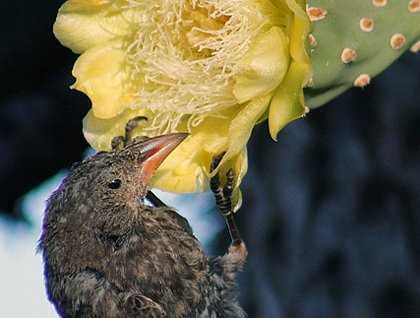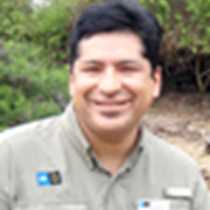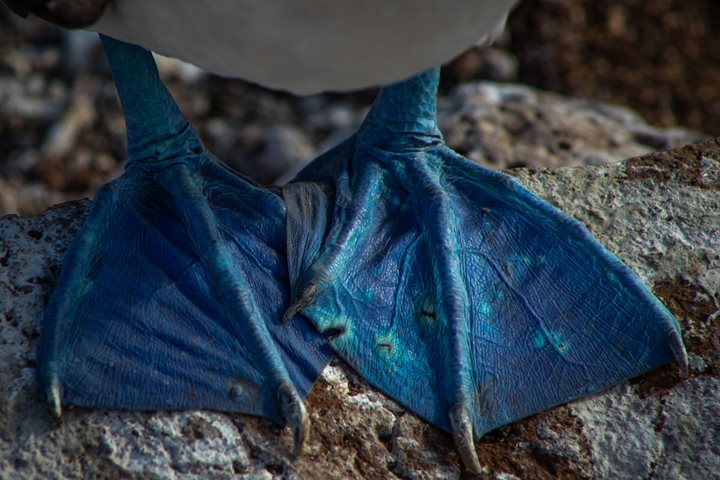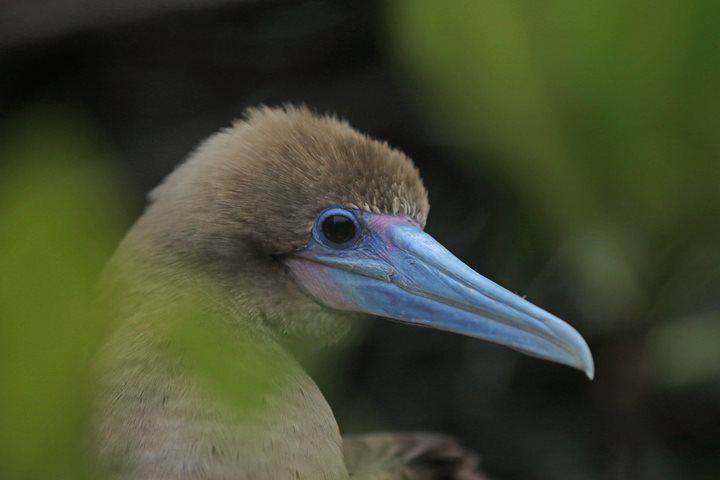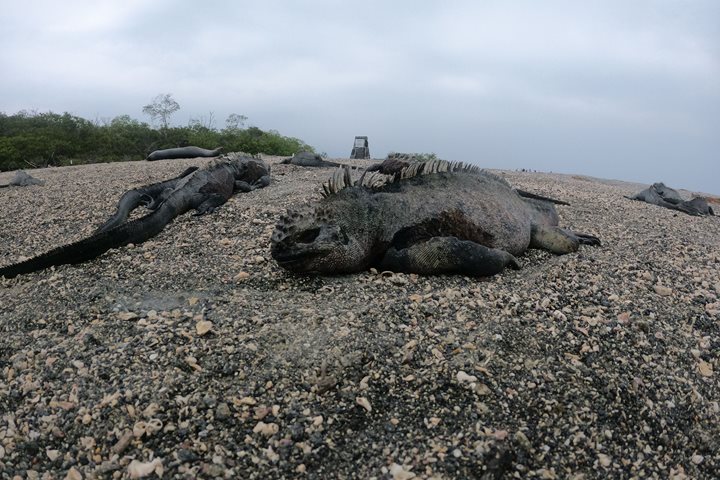After travelling several hours, a brand new day found us anchored in front of one of the hidden treasures of the Galapagos archipelago, South Plaza Island. This small island was once part of the ocean floor, for it is the product of a volcanic uplifting. Due to the amount of wildlife and beautiful landscapes South Plaza is often referred as a miniature Galapagos. Volcanic landscapes, lava flows, wildlife, birds, cacti, etc. are all concentrated in just a couple of square miles make South Plaza a genuine paradise.
The first impression while landing is not only the striking marine landscape but a cacti forest that dominates the scene surrounded by a dreamlike red vegetable carpet which is found all over. In this setting colorful Galapagos land iguanas (Conolophus subcristatus) were seen wandering around. Some land iguanas were seen today eating the abundant spiny, but juicy, cacti pads.
There are several Galapagos sea lion colonies on South Plaza Island as well. Some big sea lions were seen searching for the best position for napping while some juveniles were either exploring or playing in the surroundings.
The trail leads to a spectacular cliff side where many sea bird species were seen flying, resting and/or feeding their chicks. Galapagos shearwaters were seen swiftly skimming the ocean surface looking for food. Swallow tailed gulls were seen either flying around or taking care of their hungry offspring. Occasional frigate birds and some Darwin finches were seen gliding in the blue sky as well. Some of these emblematic bird species were seen laboriously looking for food in the cacti blossoms that abound on the island.
We spent almost three hours exploring the one mile trail. The latter proves to you that in fact South Plaza is full of wonderful photographic opportunities and enhanced our observation and appreciation skills of nature. We went back to the ship to join a presentation. Naturalist Jonathan Aguas talked about the human history of the Galapagos.
After lunch we had some downtime before starting the afternoon’s activities. Then, it was time to get ready for kayaking along Santa Fe Island. In this remote location there is striking scenery where volcanic cliffs are filled with sheer cliffs and giant prickly pear cacti. Some guests opted to go snorkeling and they had a blast, as waters were very calm today, relatively clear and many colorful reef fish species were seen, including some rays and even a marine iguana feeding underwater.
After the water activities we put on our walking outfits to explore Santa Fe Island on foot. The landing beach is home to a cheerful Galapagos sea lion colony. The rocky inland trail led us to encounter a couple of pale brownish green land iguanas, the famous Santa Fe land iguana (Conolophus pallidus). This latter species, as is name implies, in only found on this small island, nowhere else in the Galapagos, nowhere else in the world!
We finally came back onboard late in the afternoon with the innermost feeling that we were privileged to spend a whole day visiting two small, but memorable, islands that showed us the beauty of the Galapagos as its most.

